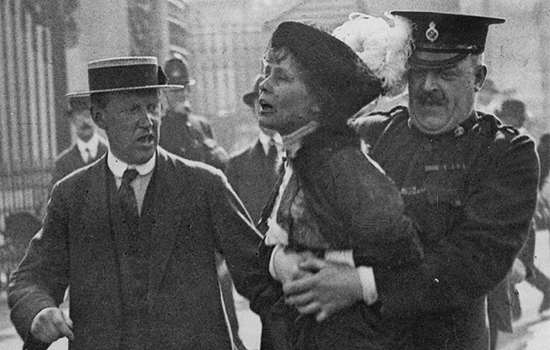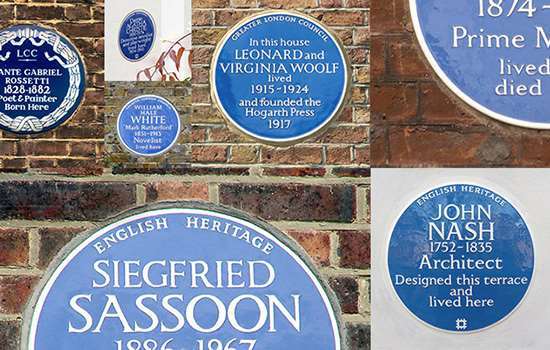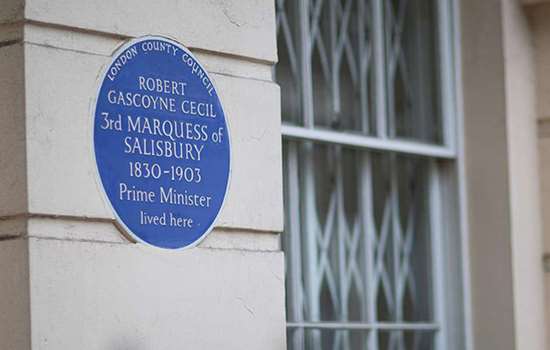FLOWERS, Tommy (1905–1998)
Plaque erected in 2023 by English Heritage at The former Post Office Research Station (now Chartwell Court, 151 Brook Road), Dollis Hill, London, NW2 7DW, London Borough of Brent
All images © English Heritage
Profession
Engineer
Category
Engineering and Transport, Industry and Invention
Inscription
The former Post Office Research Station where Tommy Flowers (1905–1998) designed and built the pioneering Colossus computer
Material
Ceramic
Tommy Flowers was an electrical engineer who designed the pioneering Colossus computer used to decipher German codes at Bletchley Park during the Second World War, and led the team that built it. English Heritage has commemorated him with a blue plaque at the former Post Office Research Station, Dollis Hill.
EARLY LIFE AND WORK
Thomas (Tommy) Harold Flowers was born in Poplar on 22 December 1905. Educated at East Ham Technical College, he was apprenticed to the Royal Arsenal in Woolwich and studied engineering part-time, graduating from London University in 1933.
In 1926 Flowers had taken a job at the Post Office – then responsible for the telephone system – as an electrical engineer and four years later transferred to the Post Office Research Station in Dollis Hill, where he worked on switching technologies.
In 1934, Flowers designed a voice frequency signalling system, which laid the foundations for the Standard Trunk Dialling (STD) operator-free telephone system. His work at Dollis Hill was wide-ranging, encompassing totalisers for greyhound tracks, calculators for x-ray crystallography, and ‘predictors’ for anti-aircraft gunnery.
Second World War work
During the Battle of Britain, Flowers was seconded to work with Fighter Command on radar. In 1941 he was sent to assist the code breakers, in particular mathematical genius Alan Turing, at the Government Code and Cypher School at Bletchley Park, Buckinghamshire. Flowers built an electro-mechanical device using high-speed rotary switches to crack the German Enigma code, but it was superseded by coding developments.
He then worked with Max Newman on the so-called ‘Heath Robinson’ electro-mechanical machine, the shortcomings of which led him and his team to build an all-electronic machine. Made mostly out of old telephone circuitry, it contained an unprecedented 1,800 thermionic valves (vacuum tubes in which a heated element – the cathode – emits electrons).
To avoid the issue of frequent valve failure caused by heating and cooling, Flowers adopted the simple expedient of never turning the machine off. Named Colossus, it was successfully demonstrated at Dollis Hill in December 1943. Following its transfer to Bletchley Park, within a fortnight it had been used to decipher the most sophisticated German codes, nicknamed ‘Fish’ and ‘Tunny’.
Colossus
Colossus was the world’s first large-scale programmable digital computer. Although it was not a stored-program computer, Flowers was aware that Turing had already conceptualised this, and Turing – on seeing Colossus at work – realised that such a machine was technically within reach. This underlines both the significance of Colossus in the development of the computer and the importance of the symbiotic Flowers–Turing partnership. Unlike many people, Flowers easily understood Turing’s sometimes convoluted speech and thought him ‘a very nice bloke’.
Flowers and his colleagues delivered an improved model, Colossus Mark II, built at Bletchley Park, that boasted 2,400 valves. This was brought into operation in June 1944, five days before D-Day, and enabled the acquisition of vital intelligence about the position of German divisions during the Allied invasion of Europe.
Flowers was awarded an MBE in 1943. He spent the rest of his working life at the Post Office: unfortunately the demands of Britain’s shattered telecoms infrastructure limited the extent of his post-war collaboration with Turing on the latter’s ACE machine.
Manchester University’s ‘Baby’ took the laurels as the world’s first programmable computer in 1948, though its data input rate was around 25 times slower than the first Colossus. One historian of technology has postulated that ‘if only Flowers and Turing had stuck together, they might have built a computer that was in a different league’.
Flowers did, however, enjoy post-war triumphs: in 1957 he created the first ERNIE, the electronic random-number generator used to pick premium bond winners, while electronic telephone exchanges, on which he had first worked 30 years earlier, came into operation during the 1960s. The declassification of official papers brought belated recognition for Flowers’s work, in the shape of an honorary degree from Newcastle University in 1977 and the inaugural award of the Post Office’s Martlesham Medal in 1980. Flowers died at his home in Mill Hill aged 93.
The Post Office Research Station
The monumental three-storey research station building dates from 1933; before this, it was housed in former army huts on the site. Flowers worked here from 1930 until 1934. The building was converted into flats in 1999, and the road that runs behind it was named Flowers Close.
After his marriage in 1935 to Eileen, Flowers lived in Mill Hill at three different addresses. Early in his life his family moved from Poplar to West Ham and always followed the local football team. Their subsequent address in Palmers Green – where Flowers lived from around 1930 to 1935 – was destroyed in an air raid in 1940 that claimed the lives of his mother and younger sister.
Unsung hero
For many years, Flowers was largely unsung for his vital war work and key role in the development of the modern computer, owing to the secrecy surrounding Bletchley Park. However, he knew that he had produced a truly innovatory machine. In his own words, many years later: ‘Colossus bore about as much resemblance to a modern computer as Stephenson’s Rocket locomotive did to the Royal Scot, but it embodied all the basic features.’


